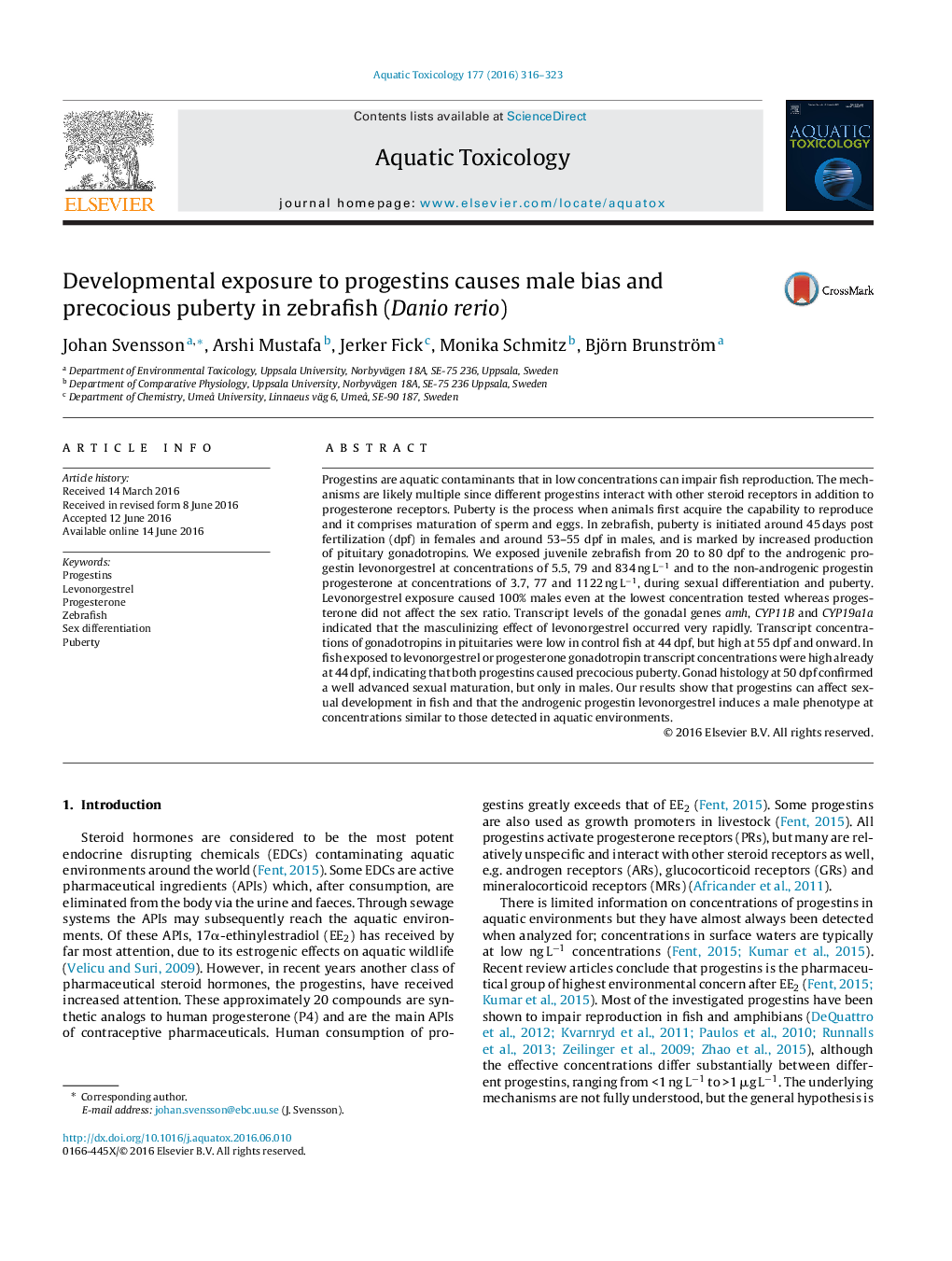| کد مقاله | کد نشریه | سال انتشار | مقاله انگلیسی | نسخه تمام متن |
|---|---|---|---|---|
| 6382027 | 1625928 | 2016 | 8 صفحه PDF | دانلود رایگان |

- Zebrafish larvae were exposed to levonorgestrel or progesterone during sexual development.
- Levonorgestrel caused all-male populations to develop.
- Both levonorgestrel and progesterone caused precocious puberty in male fish.
- Results confirm that levonorgestrel is an androgenic contaminant of environmental concern.
Progestins are aquatic contaminants that in low concentrations can impair fish reproduction. The mechanisms are likely multiple since different progestins interact with other steroid receptors in addition to progesterone receptors. Puberty is the process when animals first acquire the capability to reproduce and it comprises maturation of sperm and eggs. In zebrafish, puberty is initiated around 45 days post fertilization (dpf) in females and around 53-55 dpf in males, and is marked by increased production of pituitary gonadotropins. We exposed juvenile zebrafish from 20 to 80 dpf to the androgenic progestin levonorgestrel at concentrations of 5.5, 79 and 834 ng Lâ1 and to the non-androgenic progestin progesterone at concentrations of 3.7, 77 and 1122 ng Lâ1, during sexual differentiation and puberty. Levonorgestrel exposure caused 100% males even at the lowest concentration tested whereas progesterone did not affect the sex ratio. Transcript levels of the gonadal genes amh, CYP11B and CYP19a1a indicated that the masculinizing effect of levonorgestrel occurred very rapidly. Transcript concentrations of gonadotropins in pituitaries were low in control fish at 44 dpf, but high at 55 dpf and onward. In fish exposed to levonorgestrel or progesterone gonadotropin transcript concentrations were high already at 44 dpf, indicating that both progestins caused precocious puberty. Gonad histology at 50 dpf confirmed a well advanced sexual maturation, but only in males. Our results show that progestins can affect sexual development in fish and that the androgenic progestin levonorgestrel induces a male phenotype at concentrations similar to those detected in aquatic environments.
Journal: Aquatic Toxicology - Volume 177, August 2016, Pages 316-323